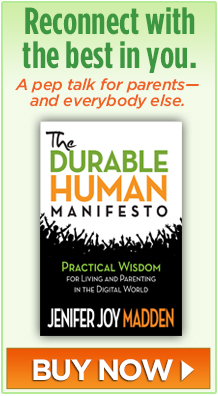 When replanting a tree, choosing just the right native can turbo-charge the natural environment. So says renowned plant expert Douglas Tallamy who has compiled a list of native plants that deliver a bigger biodiversity bang for the buck because they attract more insects, birds and other animals. “All native plants are not equal when it comes to supporting insect herbivores and thus other forms of wildlife.”
When replanting a tree, choosing just the right native can turbo-charge the natural environment. So says renowned plant expert Douglas Tallamy who has compiled a list of native plants that deliver a bigger biodiversity bang for the buck because they attract more insects, birds and other animals. “All native plants are not equal when it comes to supporting insect herbivores and thus other forms of wildlife.”
The news comes just in time for the northeast U.S. where thousands of trees destroyed in Superstorm Sandy are being replanted by residents and towns which may be focusing more on trees that are “utility friendly” than friendly to the natural environment.
As Tallamy explained in my post on how runaway growth of invasive species may have worsened Sandy’s damage, plants that are native to an area are “nutritionally available” to the local animal life, which tends to turn up their collective nose at species brought in from elsewhere. Healthy populations of insects, birds and other wildlife are crucial to humans because, in Tallamy’s words, they are “the rivets holding the ecosystems that sustain us together.” Their numbers have been decimated not only by the destruction of Sandy, but by decades of suburban development.
What’s exciting is that some natives do better than others at boosting biodiversity. “For a variety of reasons, some plant species host many dozens of specialist herbivores, while others host only a few,” Tallamy details in his groundbreaking book, Bringing Nature Home.
The worst thing to do is not replant trees for fear of future storm damage, as we hear from Tallamy himself:
Now, based on his and others’ years of research, Dr. Tallamy has come up with a “dream list” of species to replant after Sandy, which could help rebuild biodiversity throughout the Northeast:
For Trees
- White oak
- Black cherry – or any native prunus like American plum or pin cherry
- Any native birch (but choose one based on how far north you are)
For Small Trees or Shrubs
- A native willow (there are dozens)
- A native crabapple such as Malus coronaria,
- Highbush blueberry
- Corylus americana (Filbert)
- Alder
Good alternatives include:
- Serviceberry
- Crataegus (a native hawthorn)
Tree advocacy groups sell or give away native plant packages, such as those offered by the New Jersey Tree Foundation. But the packages may not be tailored to increase biodiversity. Some offer bald cypress, for instance, which Tallamy frowns upon: “Sandy victims should not use bald cypress. Its food web is in the mid to deep south.”
So, before buying trees to replant, make sure to:
- Read Tallamy’s book, which is very easy to understand
- Compare the natives offered by your local tree advocacy group or nursery with Tallamy’s list here and the lists in his book
- Buy and plant native species best suited to your conditions and nature in general
Tallamy’s words bear repeating in print:
“Don’t jump on the bandwagon of getting rid of all of your trees. That’s the first thing everybody wants to do, ‘I gotta cut all down my trees because they’re gonna fall on my house.’ I want to get more trees in the landscape. The more densely you have planted your trees, the more they are protecting each other.
Trees want to be in a forest. An isolated tree is vulnerable to being blown over, so the more trees we cut down, the more isolated the remaining ones are. Plant your trees closer than has been recommended so that, as they grow, they will interlock their roots, and think of them as tree communities, instead of single species and they’ll work together like they work in a forest situation.
But for a number of reasons, we need to get more trees into our eastern landscapes here because they’re the ones delivering the principle watershed, and biodiversity ecosystem services, and carbon sequestration, and cooling, and all those wonderful things they do for our urban heat islands. So, getting rid of trees is not the answer.”
Moving from plants to people: if you are looking for digital age wisdom about being your most effective self and raising active, engaged, nature-connected kids, check out the quick-read How To Be a Durable Human: Revie and Thrive in the Digital Age Through the Power of Self-Design.
Also: don’t miss a Durable Human post! Join the Durable Human email list for the blog, info, news and freebies.
Learn about this author on Google+.





“The worst thing to do is not replant trees for fear of future storm damage…” I so agree! This is a great article for homeowners who want to replant in their yards after Sandy. Much of the NJ Tree Foundation’s planting is done in highly urban areas, so we plant tree species that can survive & thrive small planting spaces, soil compaction, salt, pollution, etc. As a side note to offering Bald cypress – this is the first time in 15 years of giving away free trees that I offered this tree…and, folks get to choose the trees they would like to plant.
But, most importantly: “…Getting rid of trees is not the answer!” I hope everyone takes this to heart!
Lisa Simms, Director NJ Tree Foundation
Thanks, Lisa. Dr. Tallamy wanted to make sure everybody knows that his “dream list” is just a starting point. There are LOTS of native trees that boost #biodiversity! Planting trees first of all – and planting trees which are native – are the keys.
Great website! Refreshing to get back to the basics of the most simplest joys in life. You should share your site with the Environmental Media Association.
Best,
Lindsay
Thanks a lot, Lindsay! I haven’t heard of the Environmental Media Association so I appreciate the referral!